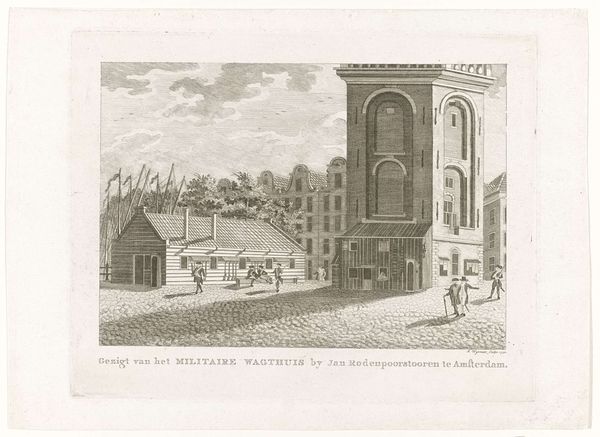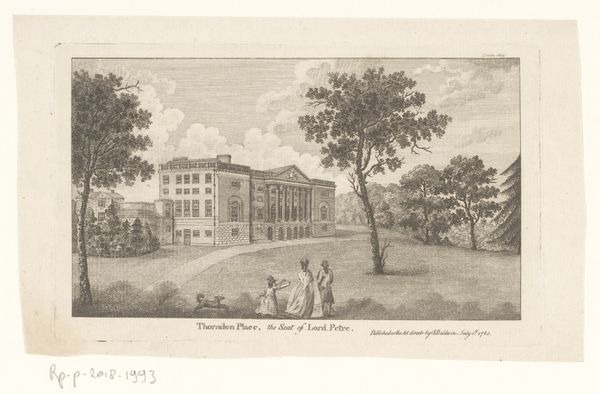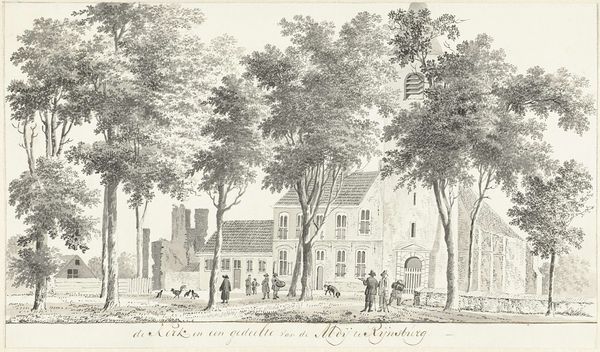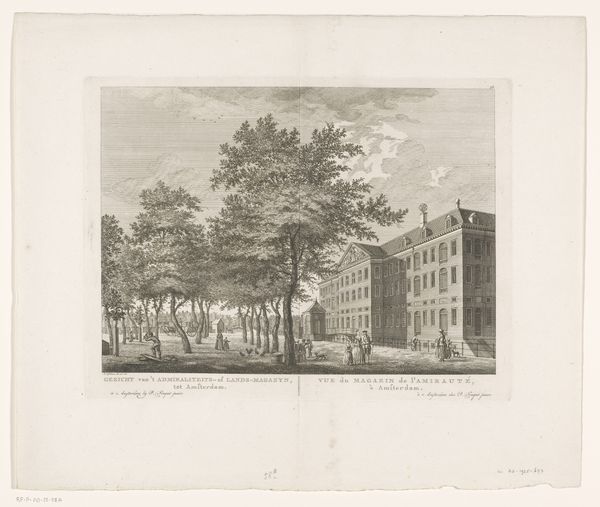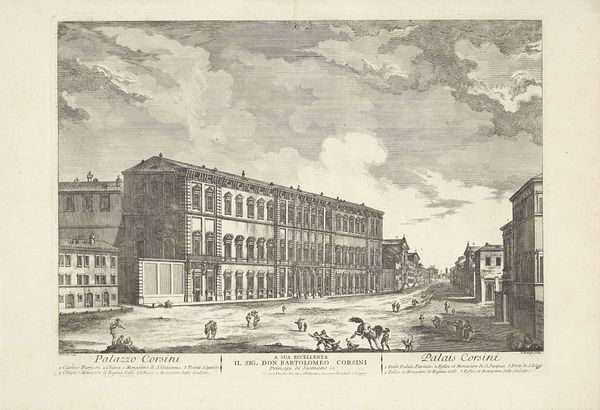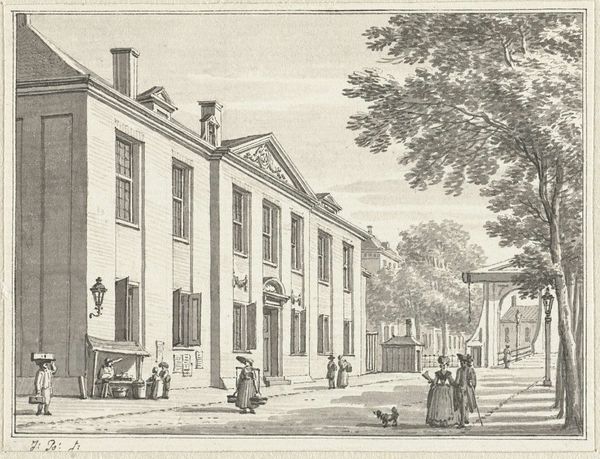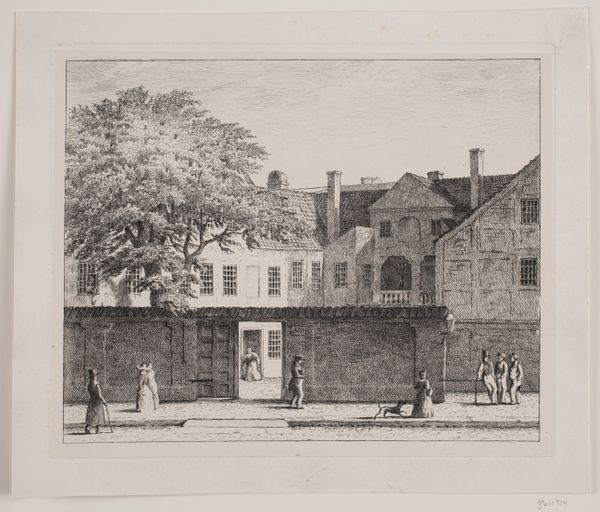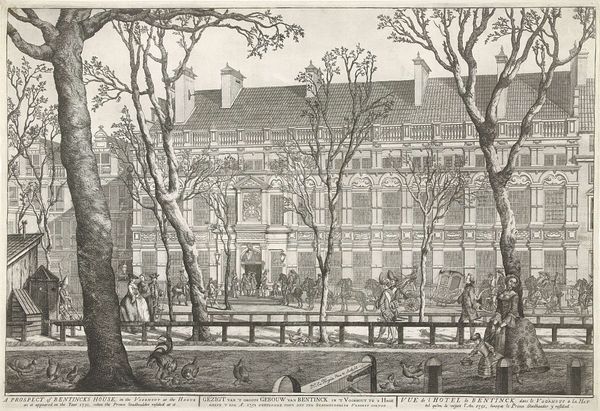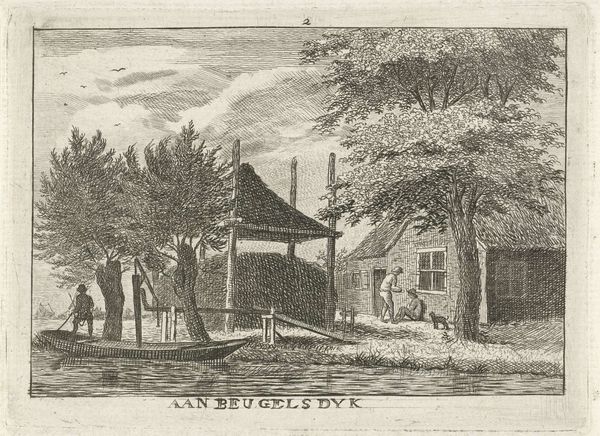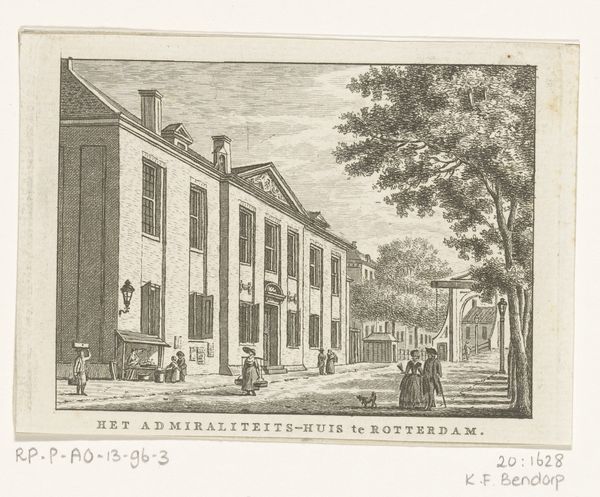
drawing, print, etching, architecture
#
drawing
#
neoclacissism
# print
#
etching
#
etching
#
architectural drawing
#
cityscape
#
architecture
Dimensions: height 221 mm, width 214 mm
Copyright: Rijks Museum: Open Domain
Curator: Welcome, I’d like to direct your attention to "De Doelen te Monnikendam," an etching and drawing, by Isaac Ouwater, made between 1758 and 1793. Editor: My first impression is one of remarkable stillness. There's a sense of quietude despite the presence of people and the detail in the architecture. The limited tonal range really enhances that feeling. Curator: Absolutely, and it's worth noting that "De Doelen" refers to a civic guard house, a space imbued with symbolic meaning during the Dutch Republic. These buildings represented collective identity and the right to bear arms, concepts deeply intertwined with civic pride and autonomy. Editor: So, thinking about materials, the deliberate choice of etching emphasizes linearity, perfect for depicting architecture so precisely. Did Ouwater prepare extensively beforehand, and would many editions of these prints have circulated to encourage particular behaviors or understandings of space and value? Curator: Very likely. Ouwater and his contemporaries employed this technique to create highly detailed records of the built environment. Consider the painstaking labor involved in each print. It transformed how Dutch society visualized itself, reinforcing these civic ideals and spreading them, print by print. Each edition became a silent promoter of a community's self-image. Editor: The visual rhetoric embedded in the civic architecture carries a potent message of self-governance and order, yet etched lines lend a hand-crafted warmth that perhaps softens any rigid, moral overtones associated with civic duty. One may even consider how this informs the value assigned to artmaking versus labour within that community. Curator: I agree. And by capturing these architectural spaces, he enshrined particular interpretations of civic virtue, imbuing these buildings with layers of historical and cultural weight that linger even today. It's a potent way to immortalize a specific worldview. Editor: Thinking through production helps to connect the materials with the deeper ideological content and even hints at consumption as part of shaping that culture. A single etching provides so much material. Curator: Indeed. A beautiful synthesis of technique, symbolism, and lasting legacy. Editor: Agreed; it speaks volumes, revealing more about materials and making when interpreted in context.
Comments
No comments
Be the first to comment and join the conversation on the ultimate creative platform.
